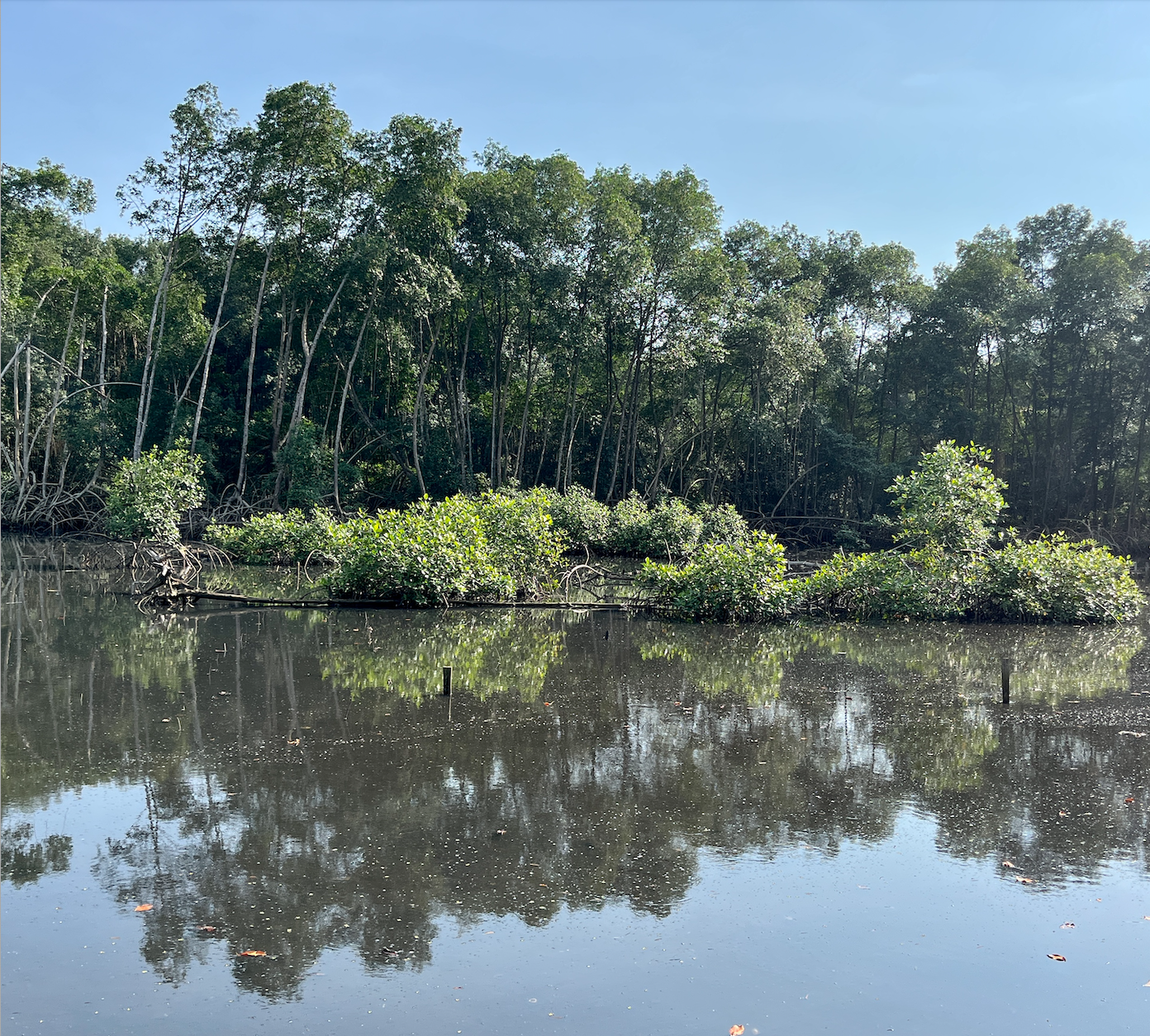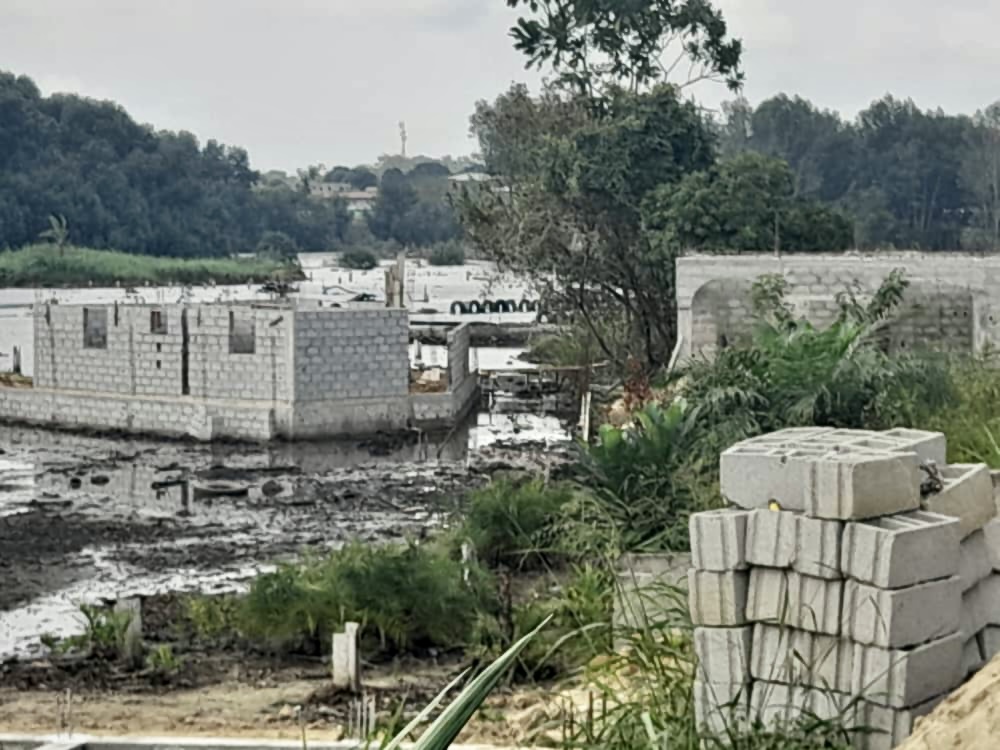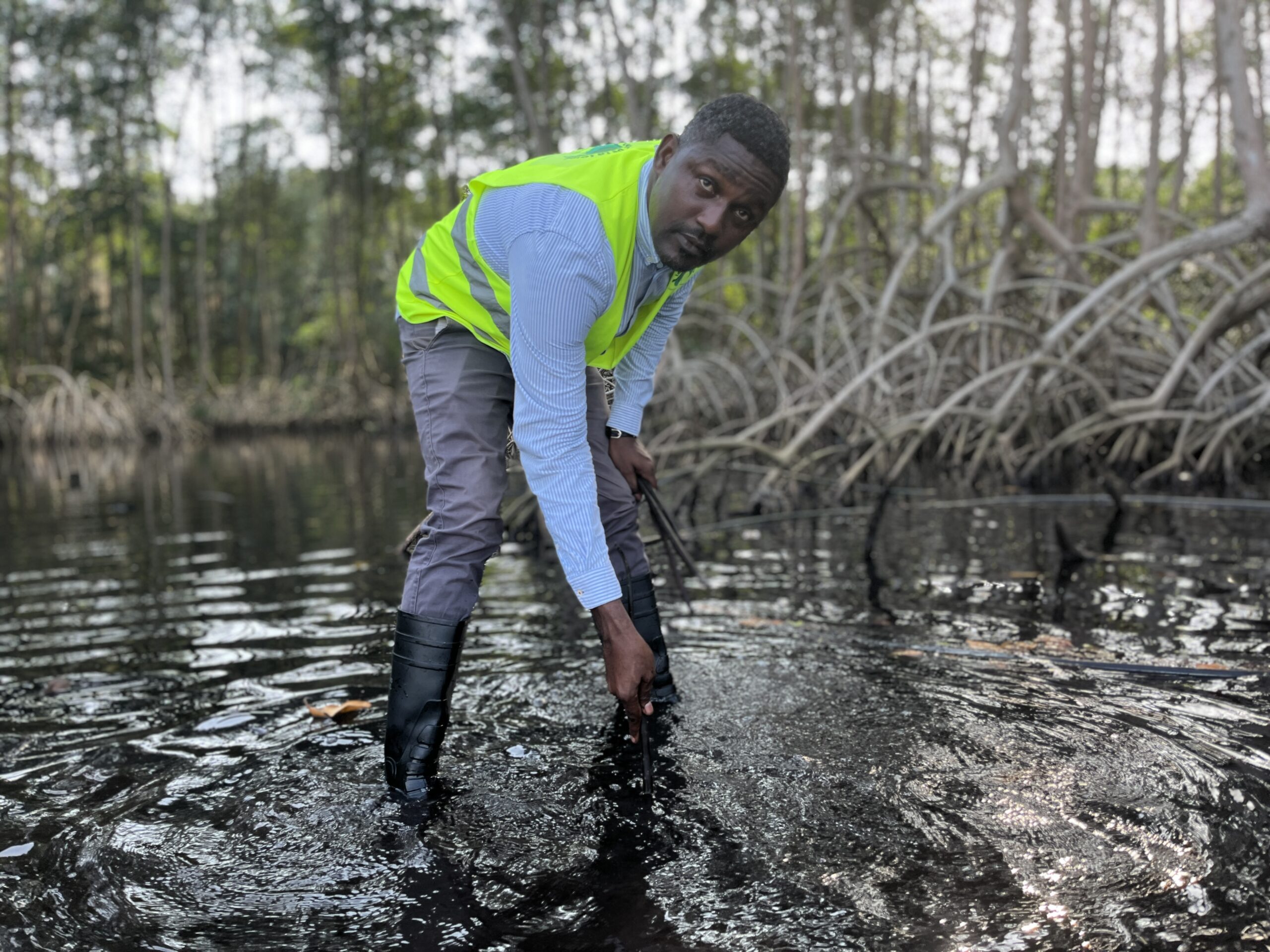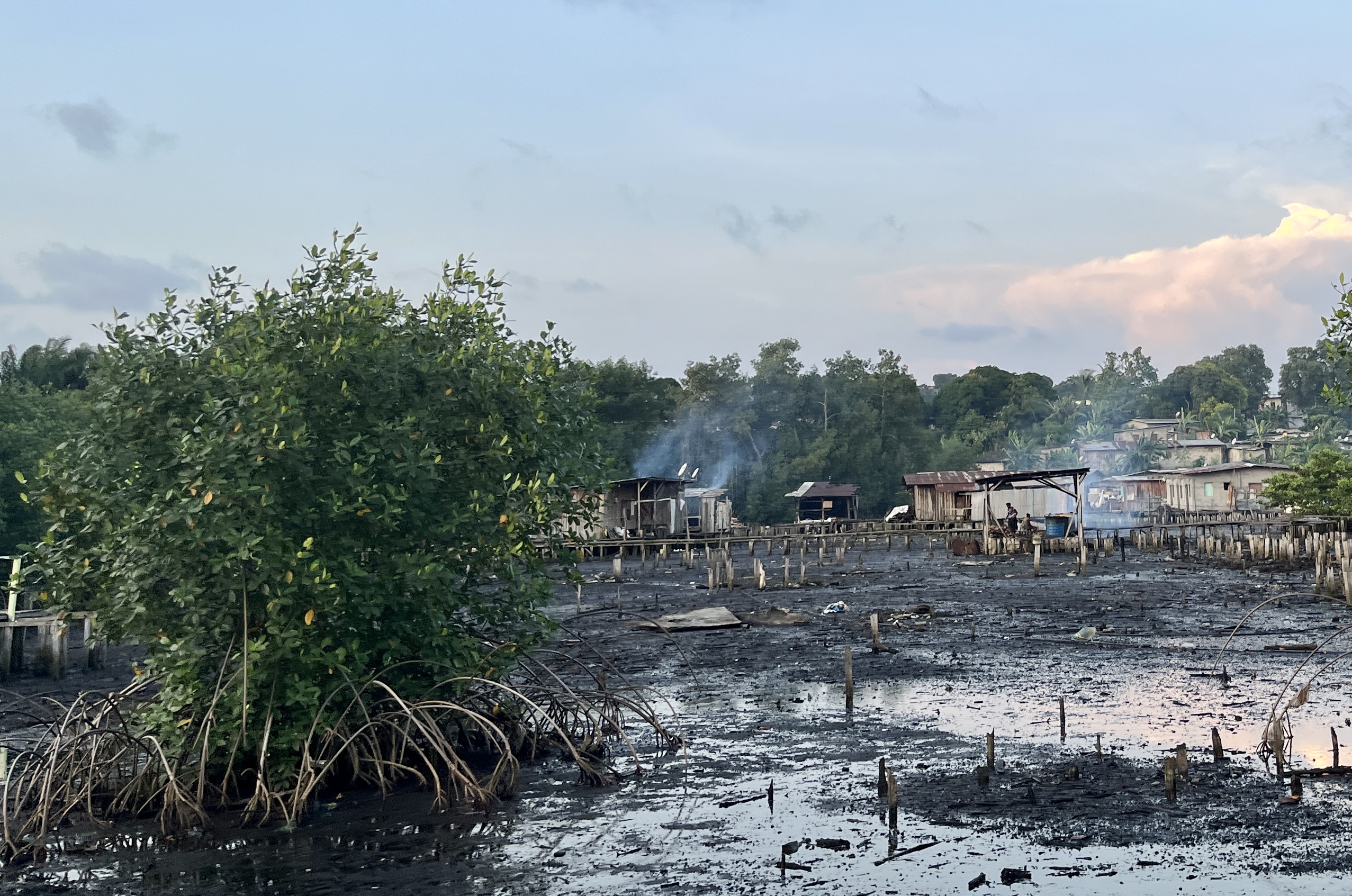Gabon’s capital, Libreville, has lost more than 3% of its mangroves in three years.Most of this loss is due to uncontrolled urbanization, with inhabitants of this fast-growing city clearing swaths of mangrove forest to build their homes.Conservationists and scientists warn this leaves the city increasingly vulnerable to floods and landslides.While the country has laws in place to protect mangroves, conservationists say poor enforcement and widespread corruption mean they’re largely toothless.
In 2021, Gabon’s space research agency, AGEOS, concluded that the country’s capital, Libreville, had lost nearly 70 hectares (170 acres) of mangroves in three years.
That’s an area about a fifth the size of New York City’s Central Park, which “is not much,” says Alfred Ngomanda, commissioner of the National Centre for Scientific and Technological Research of Gabon (CENAREST).
“The surface area of mangroves in Gabon is much larger than that,” he tells Mongabay. “We have a deforestation rate that is not even 1%.”
But while this may be a negligible amount at the national level, on the scale of Libreville, which has 1,883 hectares (4,653 acres) of mangroves, this represents 3.55% — which is worrying, says Magloire Désiré Mounganga, a former scientific coordinator at the ANPN, Gabon’s national parks agency.
“There are several things that threaten it,” he says. “First of all, there is erosion, i.e. the rise of the sea, but when I go out into the field I also see urban pressure. It is such that the mangrove ecosystem which is in the urban periphery, unfortunately, is destined to be regularly damaged, if not completely destroyed.”
Libreville’s skyline. Image by Elodie Toto / Mongabay
Mangrove forests form a unique ecosystem at the boundary between land and sea in tropical and subtropical areas. Mangrove trees have intertwined stilt roots that can grow in soil with a high concentration of salt. Hectare for hectare, mangrove forests store more carbon than tropical rainforests, according to French NGO Energy Observer, which advocates for ecological transition.
“Where mangrove forests are different is when they die, they fall into the oxygen-poor mud. The carbon in their decaying cells is buried and trapped, preventing its release into the atmosphere. It is estimated that mangrove forests across the globe store 34 million [metric] tons of carbon per year,” Energy Observer says on its website.
They are therefore precious for the planet, not to mention that their root systems also serve as a nursery for various marine species, giving Gabon a fine diversity of fish and shellfish in its waters. But there’s even more.
“The mangrove is a waterlogger for rain and tides. By destroying it, it will extend the flood zones,” Mounganga says.
 Lowé mangrove in Libreville, where deforestation is most intense in the city. Image by Elodie Toto / Mongabay
Lowé mangrove in Libreville, where deforestation is most intense in the city. Image by Elodie Toto / Mongabay
One in three Gabonese live in Libreville, a city growing so fast that the authorities are unable to provide sufficient basic urban infrastructure for its inhabitants, such as appropriate sewage systems. In its urban diagnostic study of Libreville, the African Development Bank Group notes that 80% of buildings are self-constructed in low-lying areas and are particularly vulnerable to landslides, and 41% of the built-up area is exposed to flooding. Continuing to destroy mangroves could therefore have devastating consequences for a large chunk of the people of Gabon. There have already been indications of these. In October 2022, Libreville experienced major flooding and a landslide, resulting in the deaths of seven people. A similar disaster hit the city in October 2019, during the rainy season.
A 2022 study in the environmental journal VertigO attributes much of the destruction of the mangrove in Libreville to the construction of homes. Franck Ndjimbi, a forestry and environmental governance consultant, agrees. “People find themselves draining mangroves and cutting down trees in order to build because there is no land-use plan, there is no territorial planning at all,” he says.
The study shows through a series of maps that as early as 2007, “some areas of mangrove were threatened by residential landowners who cut down trees in order to gain access to the river or extend their property.” Another threat is posed by fishers, who account for 23% of mangrove destruction.
 A house being built on the mangrove in Mindoube1 district, Libreville. Image courtesy of Guilann Ibinga
A house being built on the mangrove in Mindoube1 district, Libreville. Image courtesy of Guilann Ibinga
Yet laws exist, such as the land-use plan that regulate access to land in Gabon, and others that protect mangroves from destruction. But Ndjimbi says enforcement is weak.
“We are in a failed state. The country is riddled with corruption,” he says. “The land-use plan exists in name only, as does the national land allocation fund that the government uses as a mantra. There are even titles given for mangroves. People are settling anarchically and because it’s the law of the strongest, the poorest are being pushed into unhealthy areas and they are going into the mangroves.”
Gabon is rated as one of the most corrupt countries in the world, according to Transparency International’s Corruption Perceptions Index 2022. Thirty-five percent of respondents to TI’s survey said they had paid a bribe in the last 12 months.
On the ground, some associations are getting involved in trying to save the mangroves. In Mindoubé, a southern district of Libreville, Guilann Ibinga pulls on his rubber boots as he prepares to go to the Lowé mangrove, where deforestation is most intense, to plant new trees.
“We plant mangroves thanks to their fruits that we harvest directly from the tree, the propagules, and then we plant them in water,” says Ibinga, director of the NGO Friends of Lowé.
 Guilann Ibinga, director of the NGO Friends of Lowé, replanting mangroves. Image by Elodie Toto / Mongabay
Guilann Ibinga, director of the NGO Friends of Lowé, replanting mangroves. Image by Elodie Toto / Mongabay
To get there, he crosses what looks like a football field with loose soil and passes several houses on stilts. He finally reaches shallow water from which tall trees with visible, intertwined roots spring up.
Ibinga’s NGO has a mission of raising awareness among Gabonese youth of the importance of preserving the mangrove. When Ibinga moved into the Lowé area in 2018, it looked completely different. “There was a whole village of fishermen here, about 1,000 people, and then there was a sawmill over there,” he recalls.
Everything had been built without permission, and mangroves had been cleared. Municipal authorities evicted the fishing community, and since then Friends of Lowé has worked on its own to ensure they don’t return, Ibinga says.
 Houses on stilts built by fishermen in the Lowé mangrove in Libreville. In the past there was a whole village that stood there according to Guilann Ibinga. Image by Elodie Toto / Mongabay
Houses on stilts built by fishermen in the Lowé mangrove in Libreville. In the past there was a whole village that stood there according to Guilann Ibinga. Image by Elodie Toto / Mongabay
He adds the fishers had cut mangroves to build their houses on stilts, as well as to smoke fish. This is a common means of making a perishable food last longer, but it took a heavy toll on the mangroves. Ibinga says he regrets not receiving more support from the government.
“There are countries less wealthy than Gabon that support their civil society, but here politicians are only interested in elephants that destroy plantations,” he says. “Why not support the NGOs that are on the ground? Our presence ensures that people do not damage the mangrove. But it is thanks to our membership fees that we exist — we do not receive any money from the state.”
The scientific community also bemoans the lack of government support.
“I remember that in 2016-17, they set up the ministry in charge of the management of the public domain,” says Mounganga, the former scientific coordinator at the Gabon National Park Agency (ANPN). “I was working for the ANPN at the time. We had made a proposal to legislate to prohibit any exploitation of the mangrove that was done without taking into account the environmental and social impacts around the mangroves.
“But as soon as this ministry was dissolved, the matter fell into oblivion,” he adds. “And since then, there have been no new initiatives.”
In March 2023, Gabon hosted the One Forest Summit, a French government initiative to protect tropical forests worldwide. National delegations to the summit, including from France and the Central African Republic, ratified the Libreville Plan at its close. The declaration calls for mangroves, as a type of tropical forest, to be protected. However, the text remains very general and doesn’t include any guidelines, restrictions or obligations.
Banner image: House on stilts built illegally in the Lowé mangrove in Libreville, Gabon. This type of construction contributes to the destruction of the mangrove according to studies. Image by Elodie Toto / Mongabay
Citation:
Okanga-Guay, M., Guylia, R. L., Emmanuel, O. A., Aline, L. B., Igor, A. A., & Jean-Bernard, M. (2022). Les moteurs de la déforestation des mangroves urbaines du Grand Libreville (Gabon). VertigO, 22(1). doi:10.4000/vertigo.35668
Biodiversity, Climate Change, Conservation, Deforestation, Environment, Environmental Politics, Forests, Governance, Mangroves, Protected Areas, Tropical Forests
Africa, Gabon, West Africa
Source link : https://news.mongabay.com/2023/04/librevilles-shrinking-mangroves-leave-gabons-capital-prone-to-floods/
Author :
Publish date : 2023-04-06 07:00:00
Copyright for syndicated content belongs to the linked Source.





